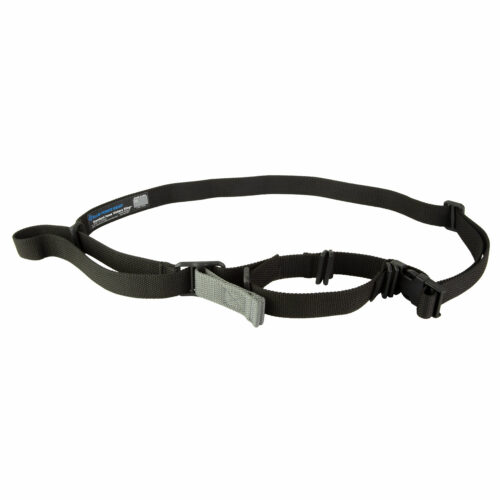AR 15 Parts Deep Dive: A Comprehensive Guide

The AR-15 stands as a widely embraced and adaptable firearm, garnering immense popularity among gun enthusiasts, sport shooters, and law enforcement agencies alike. Thanks to its modular design and customizable features, the AR-15 permits a diverse range of configurations, catering to individual preferences and requirements.
This comprehensive guide is crafted to navigate the intricate realm of AR-15 parts. We will scrutinize the upper and lower receiver components, explore common accessories and attachments, and furnish essential maintenance and care tips to uphold your AR-15 in peak condition.
Whether you’re a seasoned gun owner or a newcomer seeking insights into this iconic rifle, this guide aspires to equip you with a detailed comprehension of AR-15 parts and their collective function, contributing to the creation of a high-performance firearm.
Introduction to AR 15: History and Basic Components
The AR-15, abbreviating ArmaLite Rifle 15, boasts a captivating history dating back to the mid-20th century. Crafted by Eugene Stoner, the AR-15 was initially conceived as a lightweight and versatile military rifle. However, owing to a blend of political and commercial influences, it eventually transitioned into the civilian market, securing widespread popularity along the way.
History
The roots of the AR-15 extend to the late 1950s when Eugene Stoner, employed by the firearms manufacturer ArmaLite, conceptualized a series of rifles featuring the groundbreaking direct gas impingement operating system. Initially envisioned as a military rifle, it underwent rigorous testing and evaluations under the scrutiny of the United States military.
In the 1960s, the U.S. Air Force selected the AR-15, which was later adopted by the U.S. Army as the M16 rifle. Renowned for its lightweight design, reliability, and accuracy, the M16 became a favored choice among military personnel. The Vietnam War played a pivotal role in bringing the AR-15 to the forefront, sparking significant attention and controversy. Soldiers in the field reported both positive and negative experiences, contributing to the rifle’s complex legacy.
Basic Components
To comprehend the operation of the AR-15, a fundamental understanding of its key components is essential. While it is renowned for its modularity and numerous interchangeable parts, certain components serve as the cornerstone of the rifle:
- Upper Receiver:
The upper receiver houses critical elements like the barrel, bolt carrier group, and charging handle. It is the location where ammunition is chambered, fired, and subsequently ejected.
- Lower Receiver:
Serving as the primary frame of the AR-15, the lower receiver accommodates the trigger group, pistol grip, buffer system, and other vital parts. Legally considered the firearm, it necessitates a background check for purchase.
- Barrel:
Responsible for guiding the bullet and providing accuracy and velocity, the barrel comes in various lengths and materials, allowing for customization based on shooting preferences.
- Bolt Carrier Group:
The bolt carrier group is an indispensable component facilitating the cycling of the firearm. Comprising the bolt, firing pin, and extractor, it collaborates to load, fire, and eject cartridges.
- Charging Handle:
Located on the upper receiver, the charging handle is employed to manually manipulate the bolt carrier group, facilitating actions like chambering a round or addressing malfunctions. It is pivotal for the proper functioning of the AR-15.
Grasping these foundational components lays the groundwork for delving into the more intricate aspects of the AR-15. In subsequent sections, we will explore the upper and lower receiver components in more detail and delve into common accessories and attachments that enhance the rifle’s functionality and performance.
Common Accessories and Attachments
The AR-15’s modular nature allows users to customize and accessorize their rifles according to specific needs and preferences. A plethora of accessories and attachments are available to enhance the functionality, versatility, and overall performance of the AR-15. Here are some common ones:
- Optics and Sights:
Essential for accuracy and target acquisition, optics and sights include red dot sights, holographic sights, magnified scopes, and iron sights. They provide a clear sight picture for quick and precise aiming, crucial for long-range or competitive shooting.
- Foregrips and Bipods:
These accessories provide stability and control during shooting. Foregrips attached to the handguard offer a comfortable grip and added control during rapid fire, while bipods provide a stable rest, enhancing accuracy, especially in prone or supported positions.
- Flashlights and Lasers:
Useful for low-light shooting or tactical scenarios, flashlights provide illumination, aiding target identification, and navigation. Lasers contribute to quick target acquisition and assist with aiming and precision shooting.
- Suppressors:
Also known as silencers, these devices reduce the noise and muzzle flash produced during firing. Suppressors attach to the barrel, reducing recoil and muzzle rise. They find use in shooting ranges, hunting, and tactical applications where noise reduction is desired.
- Additional Accessories:
Various other attachments and accessories are available, including adjustable stocks for improved ergonomics, extended magazine releases for faster reloads, ambidextrous controls for left-handed shooters, and muzzle devices like compensators and muzzle brakes for recoil management.
It’s crucial to adhere to local laws and regulations, particularly regarding suppressors and other NFA-regulated items. While accessories enhance functionality, shooters should comply with legal requirements.
By thoughtfully selecting and integrating accessories, shooters can tailor their AR-15s to specific needs, be it home defense, competitive shooting, hunting, or recreational use. In the next section, we’ll delve into the maintenance and care of these parts to ensure optimal performance and longevity of the firearm.
Troubleshooting Common Issues
Being familiar with common issues and their troubleshooting can assist you in promptly addressing problems with your AR-15. Issues like failure to feed, failure to eject, or problems with the trigger may arise. Refer to your firearm’s manual or seek guidance from a qualified gunsmith for proper troubleshooting and resolution.
By adhering to these maintenance and care practices, you can ensure the longevity and reliable performance of your parts. Regular cleaning, inspection, and responsible storage contribute to maintaining the firearm’s accuracy, functionality, and overall value. Always prioritize safety and comply with local laws and regulations concerning the use, storage, and transportation of firearms.
Armed with this comprehensive guide on understanding AR-15 parts, you now possess the knowledge to make informed decisions regarding customization, maintenance, and care of your parts. Whether you’re a seasoned shooter or a beginner, a well-maintained AR-15 promises years of reliable performance and enjoyment.












